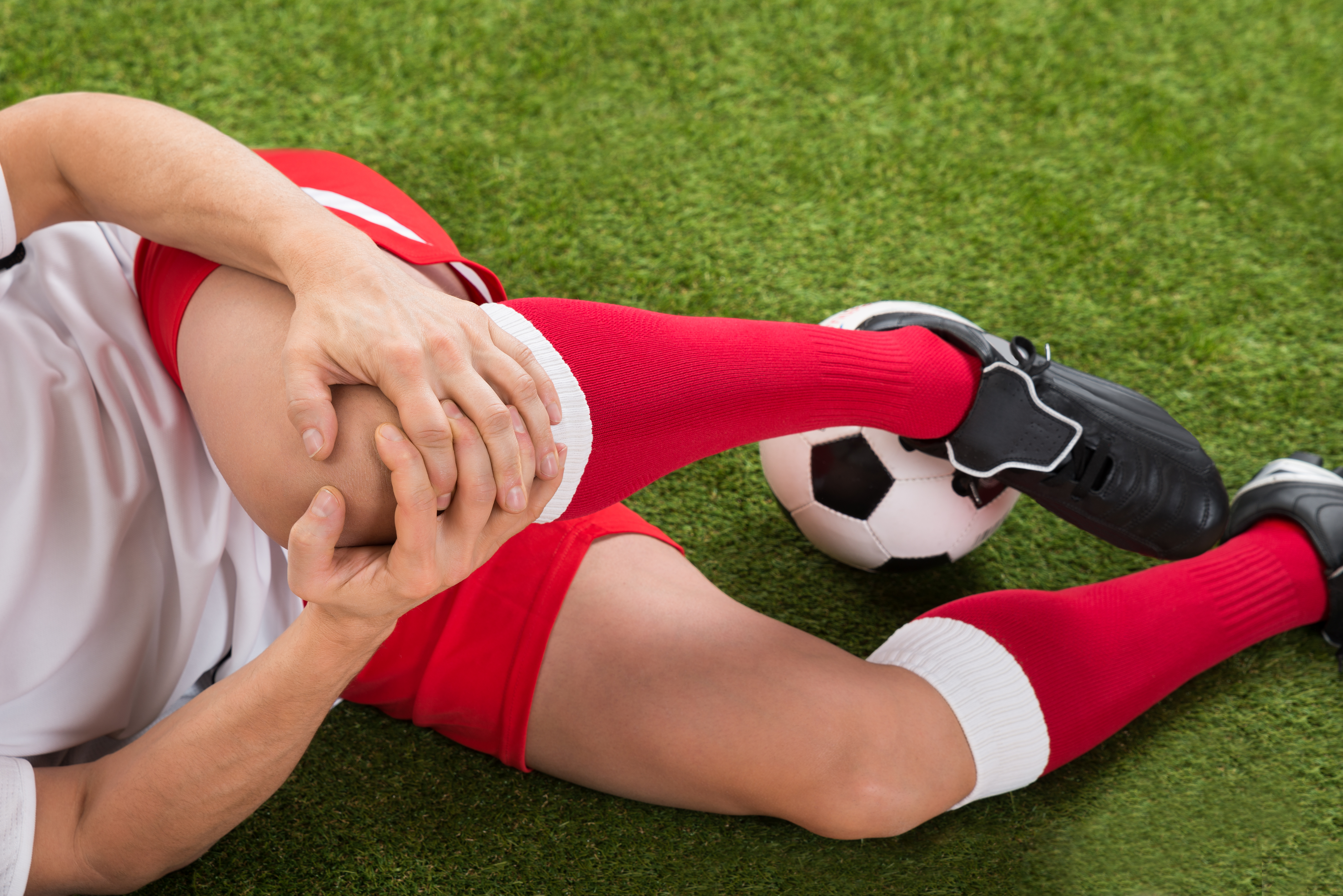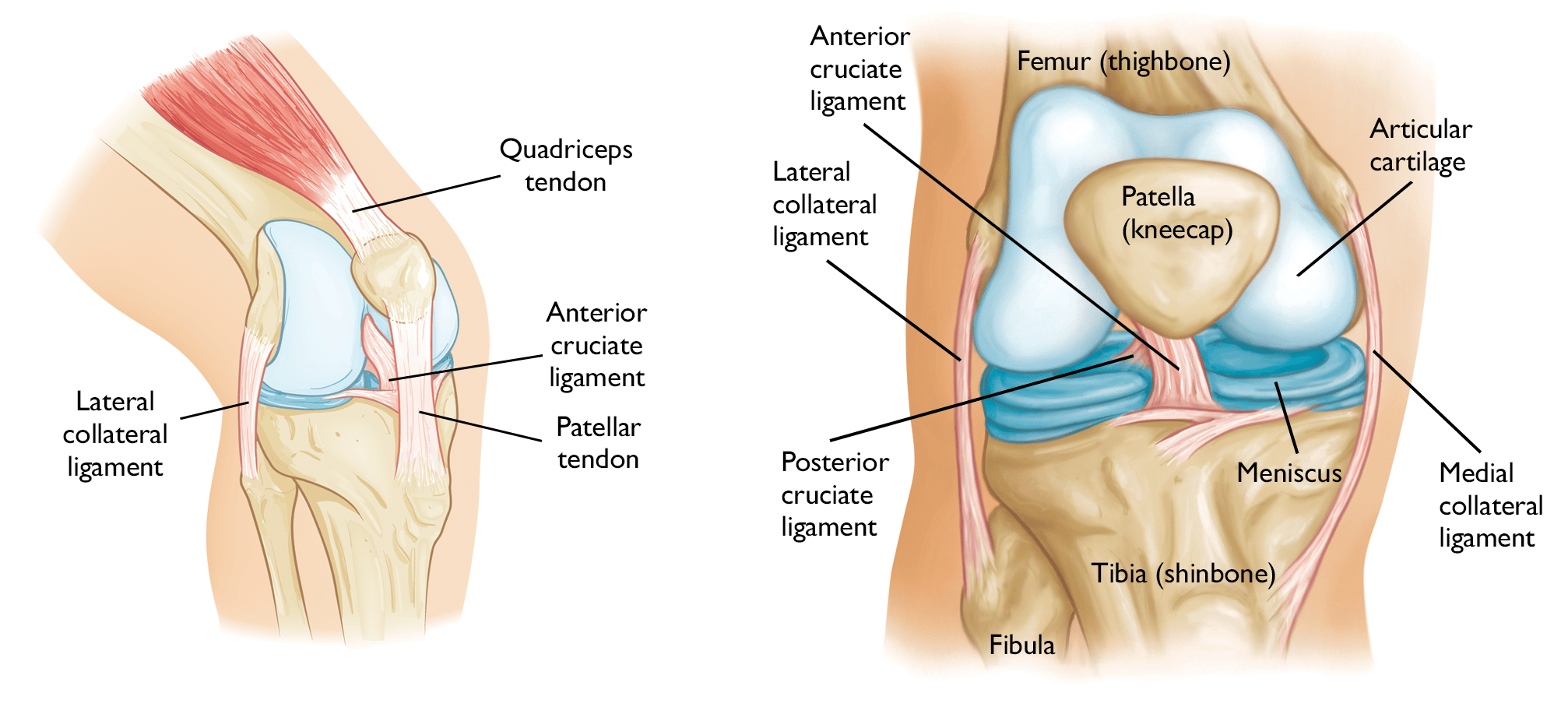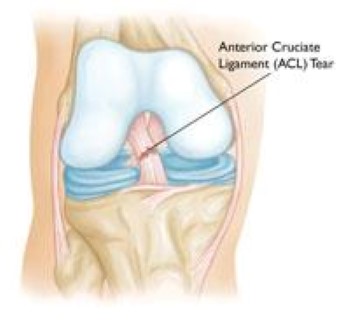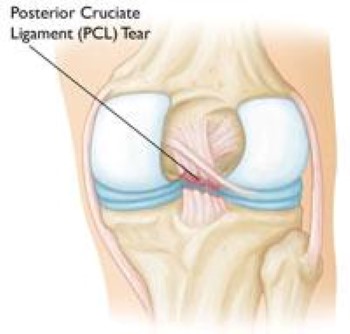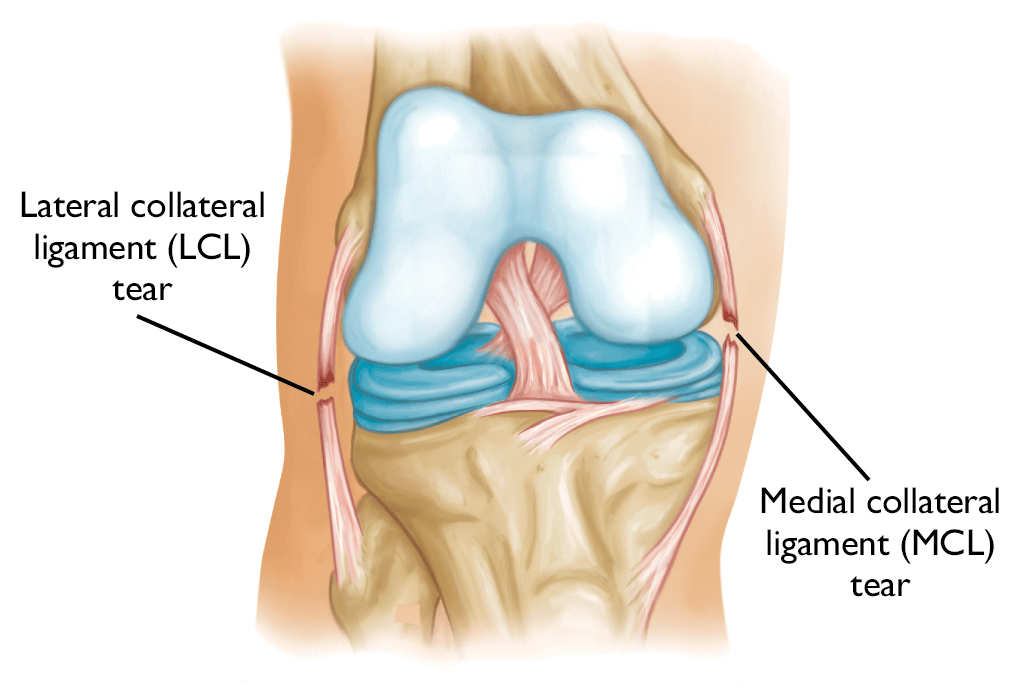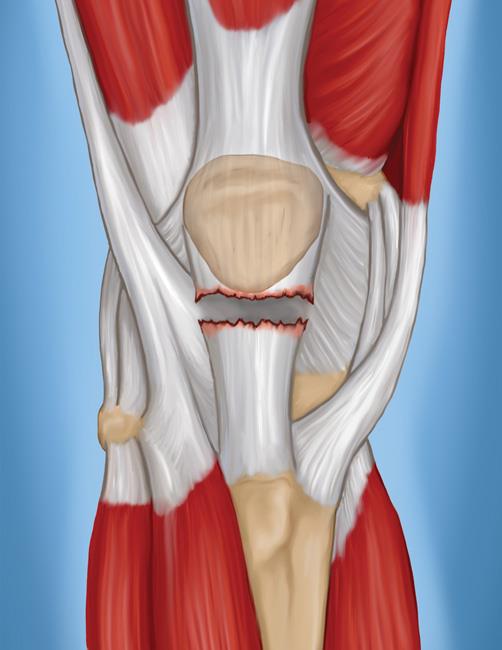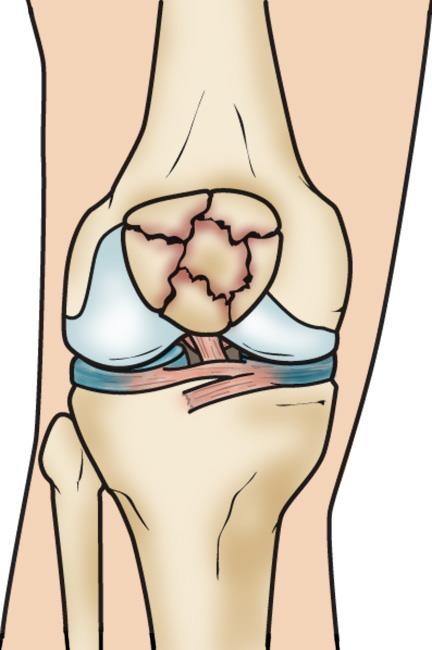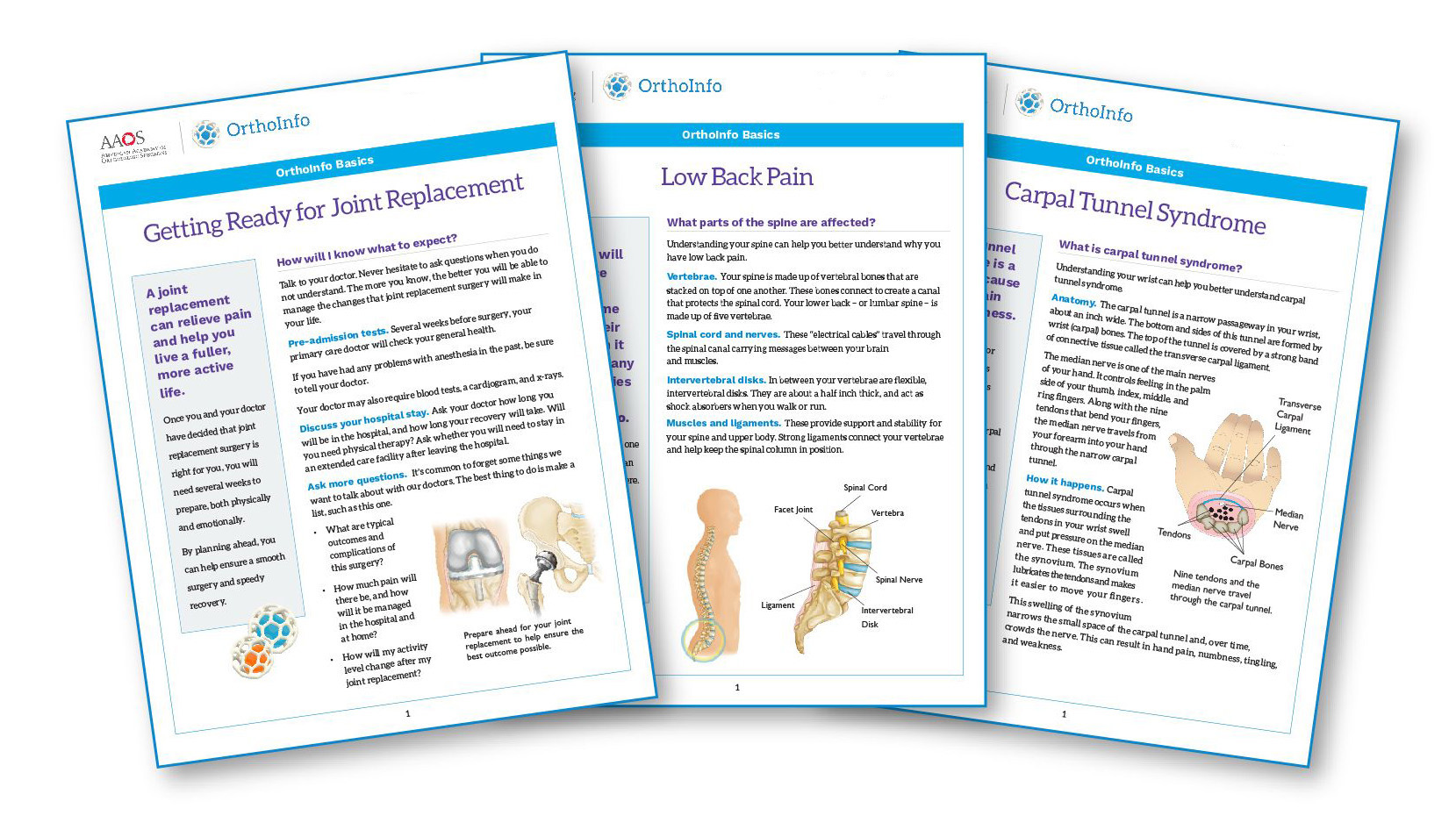Diseases & Conditions
Common Knee Injuries
The knee is a complex joint with many components, making it vulnerable to both arthritis and a variety of injuries. Some of the most common knee injuries include ligament sprains, fractures, and dislocations.
Many knee injuries can be successfully treated with simple measures, such as bracing and rehabilitation exercises. Other injuries may require surgery to correct.
Anatomy
The knee is the largest joint in the body, and one of the most easily injured. It is made up of four main structures: bones, cartilage, ligaments, and tendons.
- Bones. Three bones meet to form your knee joint: the femur (thighbone), the tibia (shinbone), and the patella (kneecap). The patella sits in front of the joint to provide some protection.
- Articular cartilage. The ends of the femur and tibia, and the back of the patella are covered with articular cartilage. This slippery substance helps your knee bones glide smoothly across each other as you bend or straighten your leg.
- Meniscus. Two wedge-shaped pieces of meniscal cartilage act as shock absorbers between your femur and tibia. Different from articular cartilage, the meniscus is tough and rubbery to help cushion and stabilize the joint. When people talk about torn cartilage in the knee, they are usually referring to a torn meniscus.
- Ligaments. Bones are connected to other bones by ligaments. The four main ligaments in your knee act like strong ropes to hold the bones together and keep your knee stable.
- Collateral ligaments. These are found on the sides of your knee. The medial collateral ligament is on the inside of your knee, and the lateral collateral ligament is on the outside. They control the side-to-side motion of your knee.
- Cruciate ligaments. These are found inside your knee joint. They cross each other to form an X with the anterior cruciate ligament in front and the posterior cruciate ligament in back. The cruciate ligaments control the front and back motion of your knee.
- Tendons. Muscles are connected to bones by tendons. The quadriceps tendon connects the muscles in the front of the thigh to the patella. The patellar tendon, on the other hand, runs from the patella to the tibia.
Common Knee Injuries
The most common knee injuries include tears of soft tissues (e.g., ligaments, meniscus), fractures, and dislocation. In many cases, injuries involve more than one structure in the knee.
Pain and swelling are the most common signs of knee injury. In addition, the knee may catch or lock. Some knee injuries (e.g., ACL tear) cause instability — the feeling that your knee is giving way.
Anterior Cruciate Ligament (ACL) Injuries
The anterior cruciate ligament is often injured during sports activities. ACL injuries are more likely to occur in athletes who participate in cutting and pivoting sports like soccer, football, and basketball. Changing direction rapidly or landing from a jump incorrectly can tear the ACL.
About half of all injuries to the anterior cruciate ligament occur along with damage to other structures in the knee, such as articular cartilage, meniscus, or other ligaments.
Learn more about ACL injuries:
Posterior Cruciate Ligament (PCL) Injuries
The posterior cruciate ligament is often injured from a blow to the front of the knee, while the knee is bent. This often occurs in motor vehicle crashes and sports-related contact. Posterior cruciate ligament tears tend to be partial tears with the potential to heal on their own.
Learn more about PCL injuries:
Collateral Ligament Injuries
Injuries to the collateral ligaments are usually caused by a force that pushes the knee sideways. These are often contact injuries.
Injuries to the MCL are usually caused by a direct blow to the outside of the knee and are often sports-related.
Blows to the inside of the knee that push the knee outwards may injure the lateral collateral ligament (LCL). Lateral collateral ligament tears occur less frequently than other knee injuries.
Learn more about collateral ligament injuries:
Meniscal Tears
Acute meniscal tears often happen during sports. Tears in the meniscus can occur when twisting, cutting, pivoting, or being tackled.
Meniscal tears may also occur as a result of arthritis or aging. Even an awkward twist when getting up from a chair may be enough to cause a tear if the menisci have weakened with age.
Learn more about meniscal tears:
Tendon Tears
The quadriceps and patellar tendons can be stretched and torn. Although anyone can injure these tendons, tears are more common among middle-aged people who play running or jumping sports. Falls, direct force to the front of the knee, and landing awkwardly from a jump are common causes of knee tendon injuries.
Learn more about tendon tears:
Fractures
The most common bone broken around the knee is the patella. The ends of the femur and tibia where they meet to form the knee joint can also be fractured. Many fractures around the knee are caused by high energy trauma, such as falls from significant heights and motor vehicle collisions.
Learn more about common fractures of the knee:
Dislocation
A dislocation occurs when the bones of the knee are out of place, either completely or partially. For example, the femur and tibia can be forced out of alignment, and the patella can also slip out of place.
Dislocations can be caused by an abnormality in the structure of a person's knee.
In people who have normal knee structure, dislocations are most often caused by high energy trauma, such as falls, motor vehicle crashes, and sports-related contact.
Learn more about knee dislocation:
Treatment of Knee Injuries
When you are first injured, the RICE protocol can help speed your recovery:
- Rest. Avoid putting weight on the painful knee.
- Ice. use cold packs for 20 minutes at a time, several times a day. Do not apply ice directly on the skin.
- Compression. Lightly wrap the injured area in a soft bandage or ace wrap.
- Elevation. To reduce swelling, elevate the injury higher than your heart while resting.
Be sure to seek treatment as soon as possible, especially if you:
- Hear a popping noise and feel your knee give out at the time of injury
- Have severe pain
- Cannot move the knee
- Begin limping
- Have swelling at the injury site
The type of treatment your doctor recommends will depend on several factors, such as the severity of your injury, and your age, general health, and activity level.
Some injuries can increase your risk of developing arthritis, so it is important to see a doctor if your symptoms affect how your knee feels or functions or do not go away on their own.
Nonsurgical Treatment
Many knee injuries can be treated with simple measures, such as:
- Immobilization. Your doctor may recommend a brace to prevent your knee from moving. If you have fractured a bone, a cast or brace may hold the bones in place while they heal. To further protect your knee, you may be given crutches to keep you from putting weight on your leg.
- Physical therapy. Specific exercises will restore function to your knee and strengthen the leg muscles that support it.
- Nonsteroidal anti-inflammatory drugs (NSAIDs). Anti-inflammatory drugs like ibuprofen and naproxen reduce pain and swelling.
Surgical Treatment
Many fractures and injuries around the knee require surgery to fully restore function to your leg.
In some cases — such as for many ACL tears — surgery can be done arthroscopically using miniature instruments and small incisions. Learn more: Knee Arthroscopy
Fractures, on the other hand, often require open surgery with a larger incision that provides your surgeon with a more direct view and easier access to the injured structures.
SOURCE: Department of Research & Scientific Affairs, American Academy of Orthopaedic Surgeons. Rosemont, IL: AAOS; February 2014. Based on data from the National Ambulatory Medical Care Survey, 2010; Centers for Disease Control and Prevention.
Contributed and/or Updated by
Peer-Reviewed by
AAOS does not endorse any treatments, procedures, products, or physicians referenced herein. This information is provided as an educational service and is not intended to serve as medical advice. Anyone seeking specific orthopaedic advice or assistance should consult his or her orthopaedic surgeon, or locate one in your area through the AAOS Find an Orthopaedist program on this website.







